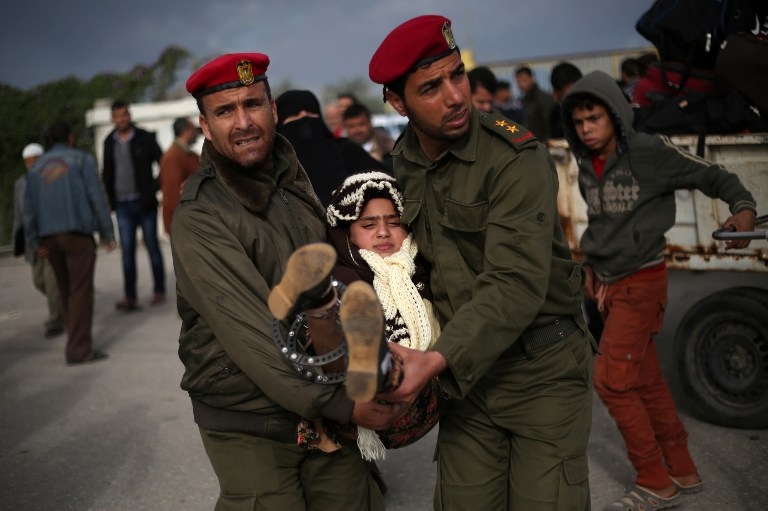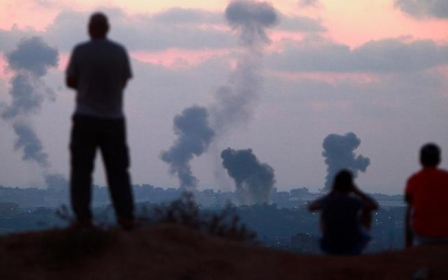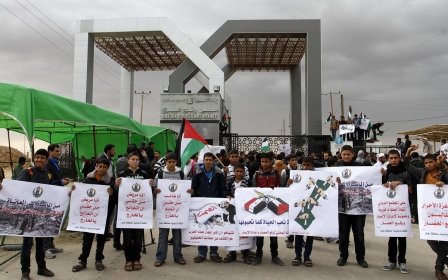Egypt allows temporary reopening of Rafah border

Egyptian authorities have reopened the Rafah border crossing for two days starting on Sunday. This marks the first time the border was opened since Egypt shut it down on 25 October, in the aftermath of 31 Egyptian army soldiers killed in a bomb attack in the Sinai Peninsula.
Over 600 Palestinians were able to leave Gaza and enter through to Egypt. 378 Palestinians on the Egyptian side of the border crossed through to the coastal strip.
The border was opened on Sunday for medical patients to leave the Gaza strip for treatment, while on Monday students and those with foreign passports stranded on either side of the border will have the chance to cross.
An Egyptian official said there was no decision to allow the permanent and full opening of the border, citing “security reasons”.
The Rafah crossing is the only border in the Gaza strip that Israel does not control, yet it is often shut down for long stretches without any adequate explanations. Egypt was criticised for sealing the border shut during Israel’s 51 day offensive on the strip in the summer, which left over 2,100 Palestinians dead and 11,000 injured.
The director of border crossings Maher Abu Sabha told AFP that a limited number of people were allowed to cross through.
"At around midday, three buses carrying around 200 people left Gaza through the Rafah terminal and entered Egypt," he said.
In late November, Egypt opened the Rafah crossing for four days in one direction, and that was to allow those stuck in Egypt to enter Gaza.
The border is often regarded as Gaza’s sole gateway to the 1.7 million residents there.
Since Hamas came to power in 2007, Israel has imposed a blockade on the strip, heavily restricting travel from Gaza and only allowing a limited number of supplies in.
According to Gisha, an Israeli organisation dedicated to freedom of movement, the Rafah border was initially controlled by Israel in 1982. Under the Agreement of Movement and Access (AMA) signed between Israel and the Palestinian Authority in 2005, the border was handed over to the PA and Egypt, overseen by an EU border monitoring mission. Despite that, Israel still maintained relative control over the border.
Up until June 2006, an average of 40,000 Palestinians were travelling through the border in both directions every month. When Israeli soldier Gilad Shalit was captured in June of the same year, the border operated at a 25 percent efficiency. The following summer, after the Hamas takeover of Gaza, the AMA agreement was frozen and the border was opened only a few days every month.
During Mohamed Morsi’s short-lived presidency, whose Muslim Brotherhood party enjoyed warm relations with Hamas, the Egyptian authorities were more lenient and the Rafah border was kept open five days a week.
The recent closures under President Abdel Fattah al-Sisi’s reign have prevented thousands of Palestinians from accessing medical treatment or higher education in Egypt and beyond. According to the UN Office for the Coordination of Humanitarian Affairs, some 3,500 Palestinians are prevented from returning home.
During the first six months of the year, when the crossing was closed for a total of 22 days, an average of 6,400 people crossed each month, the UN said.
Hamad Nahal, the Hamas official in charge of the Palestinian side of the border crossing, underlined the importance of keeping Rafah open.
“It is the only exit from Gaza for Palestinians - for businessmen, for students, for families going to visit relatives outside. But since Morsi left office last July it has been closed more and more often- sometimes for a month, sometimes up to 40 days. It is our lifeline.”
New MEE newsletter: Jerusalem Dispatch
Sign up to get the latest insights and analysis on Israel-Palestine, alongside Turkey Unpacked and other MEE newsletters
Middle East Eye delivers independent and unrivalled coverage and analysis of the Middle East, North Africa and beyond. To learn more about republishing this content and the associated fees, please fill out this form. More about MEE can be found here.




